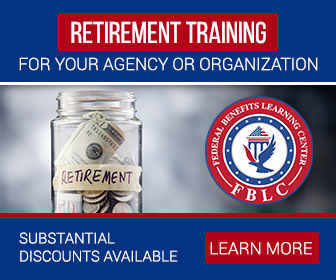Key Takeaways
-
Federal Employees Health Benefits (FEHB) premiums have risen sharply in 2025, prompting many to reassess their health coverage options to manage costs effectively.
-
Strategies like optimizing plan selection, integrating Medicare, and leveraging Flexible Spending Accounts (FSAs) can help you maintain affordable healthcare coverage.
Rising FEHB Premiums: What’s Behind the Increase?
If you’re feeling the pinch of rising FEHB premiums, you’re not alone. Premiums have jumped by an average of 11.2% this year, with enrollees bearing an even steeper 13.5% hike. These increases are fueled by growing healthcare costs, inflation, and higher utilization rates. While the government covers about 70% of the total premium, the share that falls on your shoulders can still be significant.
- Also Read: FAA, Law Enforcement, and Special Federal Employee Categories—Here’s What Makes Their Retirement Unique
- Also Read: Blending Private and Public Sector Retirement Plans Is Complicated—Here’s Where Couples Get It Wrong
- Also Read: The Silent Shift in Postal Service Retirement Benefits That Could Change Everything by 2026
Understanding Your Options
When premiums rise, taking a closer look at your FEHB options becomes essential. The annual Open Season gives you a chance to adjust your plan, and with the right strategy, you can mitigate some of the financial impact. Here are the critical factors to consider:
Plan Types and Coverage Levels
FEHB offers various plan types, from High-Deductible Health Plans (HDHPs) to comprehensive fee-for-service (FFS) options. Each has its trade-offs in terms of premiums, out-of-pocket costs, and benefits. For 2025, enrollees who opted for HDHPs benefit from lower premiums but must budget for higher deductibles and co-pays. Conversely, FFS plans typically offer richer benefits but come at a steeper cost.
Self vs. Family Enrollment
If you’re covering dependents, switching from a Self and Family to a Self Plus One plan might save you money. However, it’s essential to compare the coverage and assess if it meets your family’s healthcare needs.
Regional and National Plans
FEHB includes both regional and national plans. If you’re not tied to a specific healthcare provider network, exploring regional options could lead to savings. National plans often come with broader networks but at a higher premium.
Leveraging Medicare for Retirees
Retirees enrolled in Medicare can strategically pair it with FEHB to maximize savings. Medicare becomes your primary payer, reducing out-of-pocket expenses under your FEHB plan. For example:
-
Medicare Part A: Covers inpatient hospital services at no additional cost if you have sufficient work history.
-
Medicare Part B: Requires a monthly premium but provides extensive outpatient coverage.
-
Medicare Part D: Often integrated into FEHB plans for retirees, simplifying prescription drug coverage.
By integrating Medicare with FEHB, retirees often experience significant reductions in deductibles, coinsurance, and copayments, making healthcare costs more manageable.
Flexible Spending Accounts: A Hidden Gem
If you’re not already using a Flexible Spending Account (FSA), now’s the time to consider it. FSAs allow you to set aside pre-tax dollars for qualified medical expenses, which can effectively lower your taxable income. Here’s how FSAs work:
-
Annual Contribution Limits: In 2025, you can contribute up to $3,050 to a healthcare FSA.
-
Eligible Expenses: These include prescription medications, co-pays, and even some over-the-counter items.
-
Use-It-or-Lose-It Rule: Be mindful of spending deadlines, as unused funds may not roll over.
Retirement Considerations
As you approach retirement, understanding how FEHB premiums interact with other benefits is crucial. Here’s what you should know:
Retaining FEHB in Retirement
You’ll need to meet specific criteria to carry FEHB into retirement:
-
Be enrolled in FEHB for the five consecutive years before retirement.
-
Retire under a qualifying system such as FERS or CSRS.
Once retired, your premiums are deducted from your annuity, making it even more critical to budget for the costs.
TSP Contributions and Healthcare
Don’t overlook the role of your Thrift Savings Plan (TSP) in managing healthcare costs. The 2025 contribution limit of $23,500 (or up to $34,750 for those aged 60-63) allows you to allocate funds for future medical needs. A well-funded TSP can provide a financial cushion, ensuring that rising FEHB premiums don’t derail your retirement plans.
Tips for Keeping Costs Under Control
Rising premiums don’t have to spell financial disaster. With the right strategies, you can keep your healthcare affordable without sacrificing quality. Here are some practical tips:
Shop Around During Open Season
Don’t stick with the same plan out of convenience. Use tools like the Plan Comparison Tool to evaluate your options. Compare premiums, deductibles, and provider networks to ensure you’re getting the best value.
Maximize Preventive Care
Many FEHB plans offer free or low-cost preventive services, such as annual checkups, immunizations, and screenings. Taking advantage of these services can help you catch potential health issues early, reducing long-term costs.
Negotiate Medical Bills
If you’ve incurred unexpected medical expenses, don’t hesitate to negotiate. Many providers are willing to work out payment plans or even reduce bills for prompt payment.
Wellness Incentives
Several FEHB plans provide wellness incentives, such as reimbursements for gym memberships or discounts for participating in health management programs. These incentives can offset some of your healthcare costs while encouraging a healthier lifestyle.
The Role of FEDVIP
While FEHB covers medical care, don’t forget about dental and vision coverage through the Federal Employees Dental and Vision Insurance Program (FEDVIP). Although FEDVIP premiums have also risen, they’re often more affordable than standalone private plans. Plus, comprehensive dental and vision care can prevent costly issues down the line.
Staying Informed
Healthcare needs and costs evolve, so staying informed is key to making smart decisions. Regularly reviewing your plan’s benefits and costs ensures you’re prepared for changes. For 2025, the following tools can help:
-
Annual Notice of Change (ANOC): Outlines changes to your FEHB plan’s premiums, benefits, and network.
-
OPM Resources: The Office of Personnel Management provides detailed plan information and comparison tools to guide your choices.
-
Employee Assistance Programs (EAPs): Many federal agencies offer EAPs, which can provide guidance on financial planning and healthcare decisions.
Why It Matters
Managing rising FEHB premiums requires a proactive approach, but the payoff is worth it. By optimizing your plan selection, leveraging benefits like FSAs and Medicare, and staying informed about your options, you can keep your healthcare affordable without compromising on coverage. The strategies you implement today will help secure a financially stable future, whether you’re an active employee or enjoying retirement.
Making Smart Choices for Your Health Coverage
As a federal employee or retiree, navigating rising FEHB premiums can feel overwhelming. But with careful planning and informed decisions, you can maintain comprehensive coverage while staying within your budget. Take advantage of available resources, review your options during Open Season, and consider integrating additional benefits like Medicare and FSAs to keep your healthcare costs under control.












